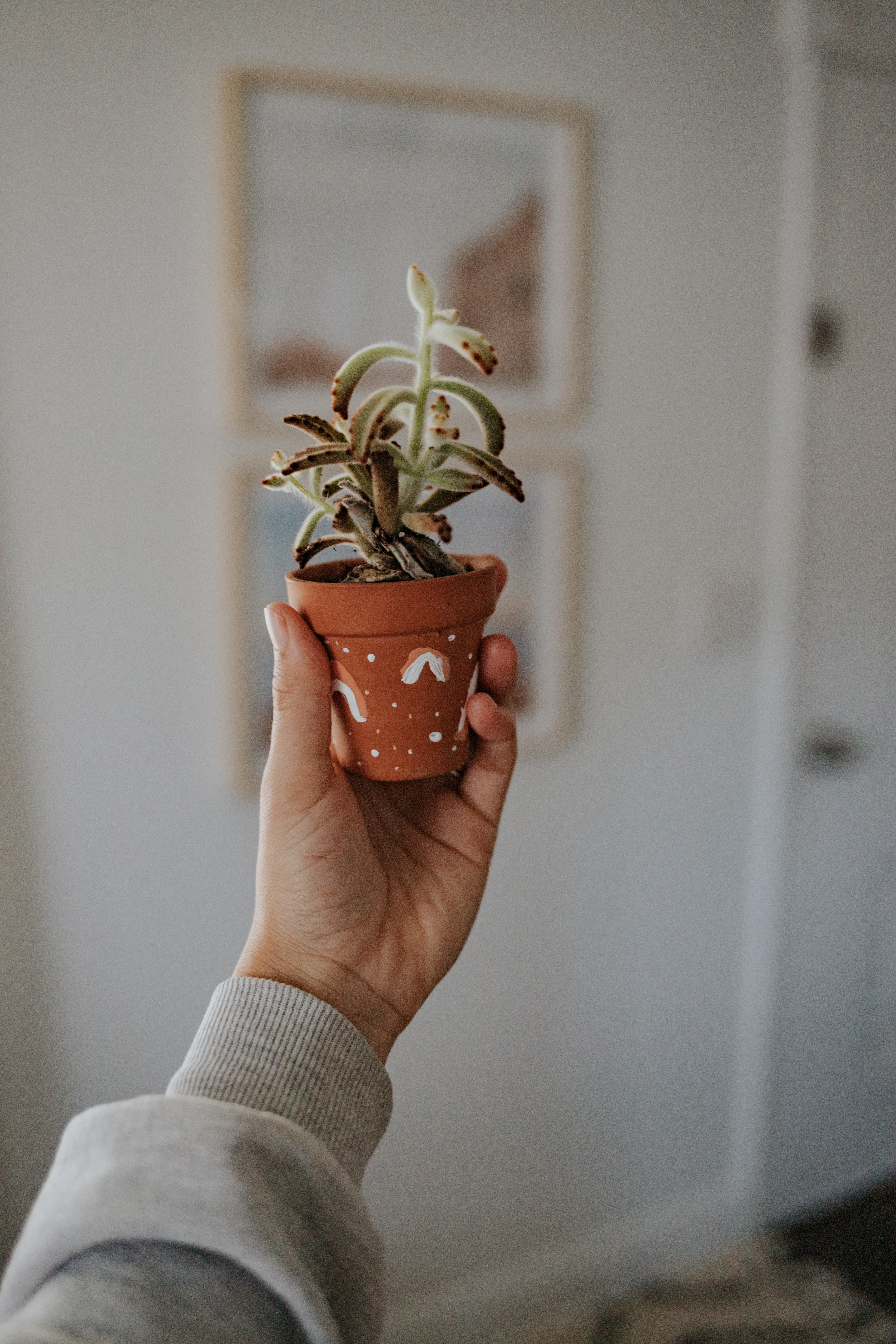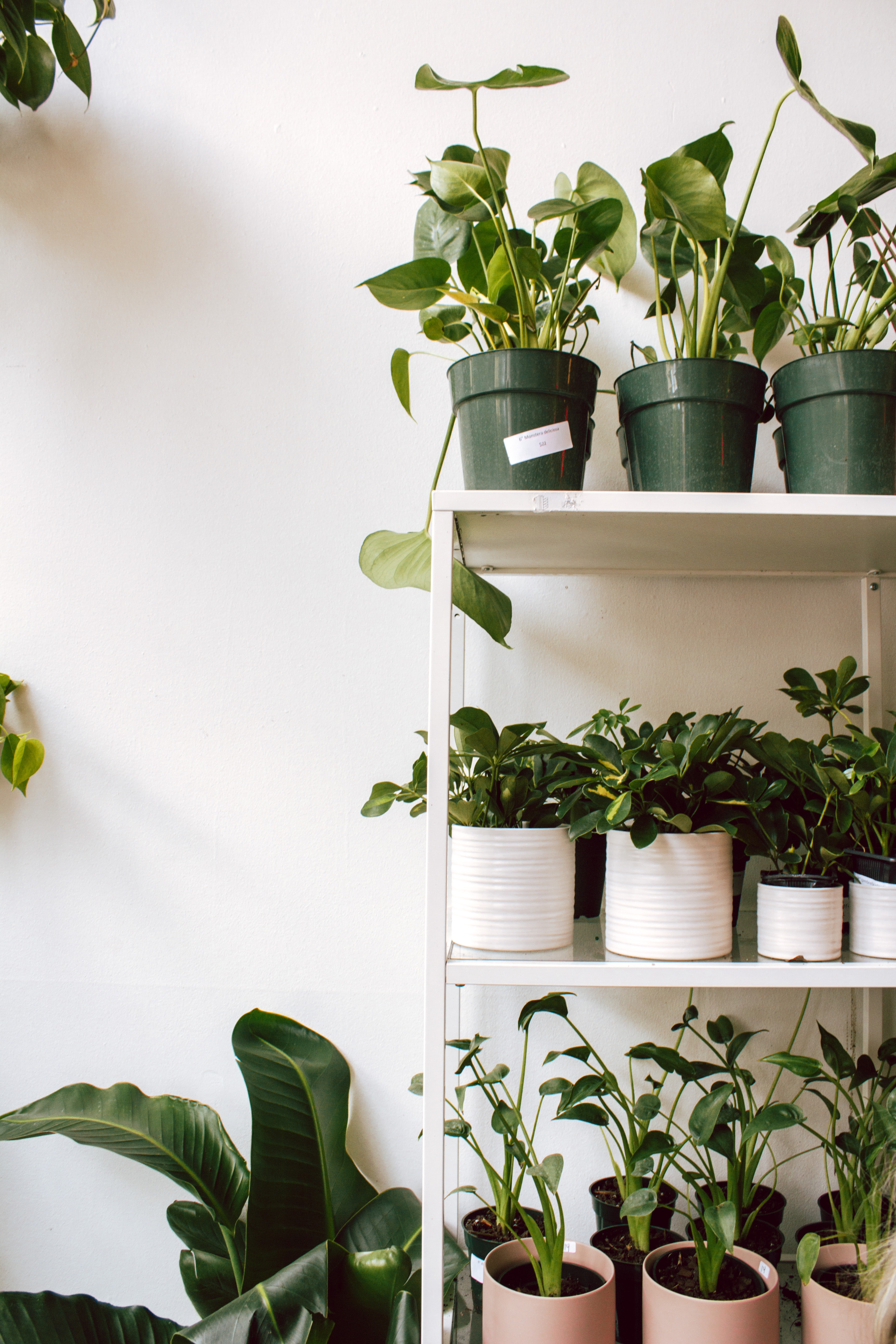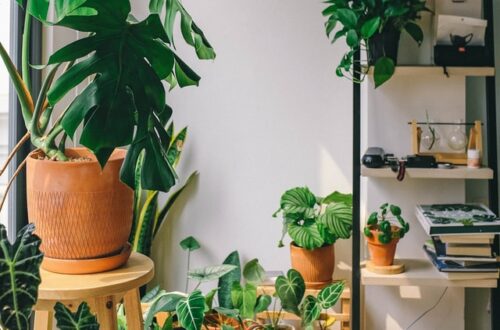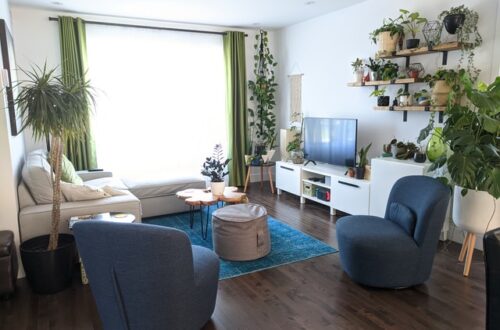How to Choose The Best Pot For Your Houseplant
Whether it’s your first plant or your 100th plant, the first question you might ask yourself is “What pot do I plant this in?” How on earth do you choose the best pot for your houseplant? With so many options to choose from, it can get a little overwhelming.
This is a guideline for what pot works best for particular houseplants. If your heart is absolutely set on a certain pot that may not be the best choice on paper, don’t worry! There are ways that you can make it work. You may just have to adjust your watering habits, experiment with light, soil, and so on. This blog will give you a crash course on the different types of pots, and how they work for or against certain houseplants. With this information, you can make an informed decision to choose the absolute best pot for your houseplant.
Terra Cotta
Let’s start with the classic terra cotta. When it comes to choosing a pot for your plant, this may be a top consideration. They now can come in a variety of colours (or you can paint your own) and are generally very inexpensive. Not only has it become a very trendy and popular aesthetic lately, but it also can be very beneficial to your houseplant too! The porous clay whicks the excess moisture out of the soil. This makes it an excellent choice for plants that are very susceptible to root rot.

Plants That Love Terra Cotta Pots
- Peperomia
- Succulents
- Pilea Peperomioides
- String of Hearts
- Hawarthia
- Snake Plant
- ZZ Plant
- Thick, Succulent Hoya Varieties
- Some Aroids
For this reason, you may want to pass on this choice if you’re considering this pot for a plant who cannot live without consistently moist soil. If you throw caution to the wind and still pot your plant in a terra cotta, just be prepared to step up your watering game, and deal with a few crispy tips.
Plants That Typically Don’t Do Well in Terra Cotta
- Calathea
- Stromanthe
- Prayer Plants
- Ferns
- Peace Lilies
- Jewel Orchids
Ceramic Pots
With endless gorgeous design possibilities, there’s no denying ceramic pots are beautiful! They come in a wide range of different prices and sizes for any budget or any plant. What’s unique about ceramic pots is that they tend to retain moisture. This makes them a particularly good choice for plants with thinner, delicate foliage. These plants typically love more moisture and are used to wet, tropical conditions. The ceramic pot does have some drawbacks. It is not a great choice for plants with delicate root systems that are sensitive to overwatering.
There’s also the struggle with drainage. They’re often considered more of a home decor item than a practical houseplant home, and come without drainage holes. Drainage is a must for every houseplant, so you either need to be careful of the ceramic pots that you purchase or drill your own. If you are hoping to choose the right pot for your houseplant, these plants will love a ceramic pot.

Plants That Love Ceramic Pots
- Calathea
- Prayer Plants
- Stromanthe
- Ctenanthe
- Peace Lilies
- Thinner, delicate Hoya varieties
- Ferns
- Some Palm varieties
But what if you fall in love with a ceramic pot, but you don’t want to risk your plant? We’ve all been there, and there is a simple solution to have your cake and eat it too!
Cache Pots
Found a gorgeous ceramic pot but there’s no drainage holes? Love the aesthetic of the terra cotta but afraid to pot your precious Calathea in one? You can easily get around this dilemma by using a cache pot!
Use a nursery pot that has proper drainage and slip it inside the pot that you want the world to see, and it’s as simple as that! Your plant will have the drainage it needs and you don’t have to compromise the aesthetic you desire in your home.
You may need to add pebbles to the bottom of the pot so that the plant sits in perfect position as well. Any plant can benefit from a cache pot, so it’s a very versatile option if you are looking to choose the right pot for your houseplant.
Nursery Pot
Now that we’ve established what a cache pot is, let’s discuss nursery pots! Nursery pots are the plastic pot that you typically bring your plant home in from the nursery (hence the name!)
A good nursery pot should have excellent drainage (there are some exceptions so it’s best to check!) and is suitable for most houseplants, again, with some exceptions. The biggest drawback with nursery pots is that they are considered unsightly, which is why many people opt for using them in a cache pot. A good nursery pot can be as good as gold, so if your plant outgrows them and needs a repotting, I’d recommend to save that nursery pot for other plants. This is also better for the environment than continuously ordering them on Amazon, and discarding them (see my blog for environmentally friendly houseplant tips for more!).
If you decide to leave your plant in its nursery pot there are a few things to consider:
- The soil is compatible to your houseplant
- The soil isn’t infested with pests
- That your plant doesn’t need immediate repotting (full blog on this coming soon!)

Self-Watering Pot
For the busy plant parent, a self-watering pot may sound like a dream. If you’re hoping to choose the right pot for your houseplant, this may be a great option, with some exceptions. Like the ceramic pot, it’s not the best match for plants that do not need a lot of water and certainly not for plants that have sensitive roots, as the self-watering pot ensures that the soil is moist at all times.
This would, however, be a great fit for plants that do like consistently moist soil, that you have a hard time keeping up with their watering schedule.
Self-Watering Pots tend to be more expensive, so you might want to save this option for those extra special houseplants. But with that said, if you have a plant that is particularly expensive, don’t forget to fill the self-watering pot’s water reserves when it needs it!
In Summary…
Hopefully you are armed with the information that you need to make an informed decision to choose the right pot for your houseplant. Once again, if you are completely committed to a certain pot that may not agree with your plant’s care needs on paper, don’t worry! You may simply need to adjust your watering habits or experiment with light to make it work. That’s the fun part about indoor gardening!
Happy Planting and Happy Potting!
Follow my plant journey on Instagram @plantyquirkyblogger!

